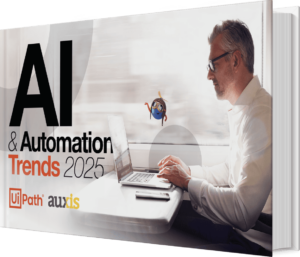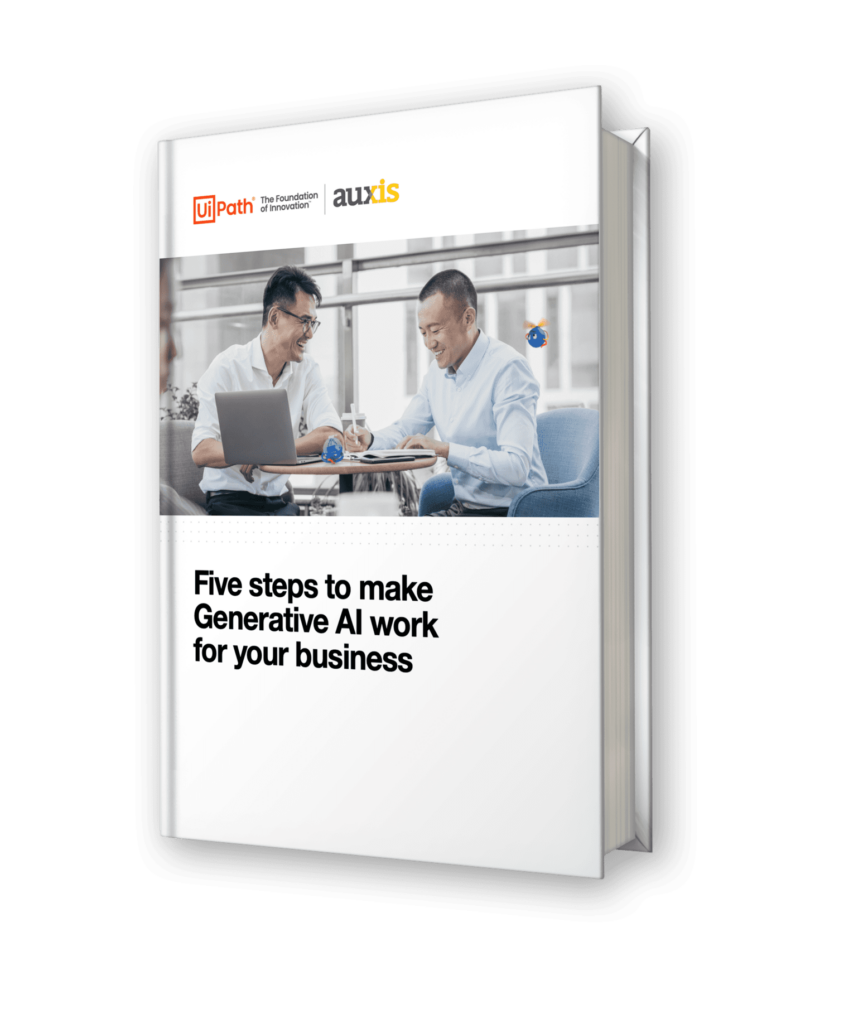In brief:
- Managing AI inaccuracies and hallucinations is a critical challenge for companies that embark on an AI journey.
- Implementing AI governance and guardrails effectively is essential to ensuring the reliability and trustworthiness of AI technology.
- Eight best practices ranging from data quality control measures to must-have governance tools can help you avoid flawed AI responses and reap the full potential of this transformative technology.
- As the AI landscape continues to evolve, staying ahead of emerging AI governance trends will be crucial for organizations to thrive in the digital age.
In the dynamic landscape of artificial intelligence (AI), governance and guardrails are critical to ensuring that AI systems are developed and used responsibly. One of the key challenges in AI governance is managing inaccuracies and hallucinations—instances where an AI model returns unexpected or incorrect results that can potentially trigger business consequences.
This article explores the governance topics essential for addressing this important issue, providing a comprehensive framework for organizations to follow to ensure the reliability and trustworthiness of their AI systems.
What causes AI hallucinations?
The first step to learning how to prevent AI hallucinations and inaccuracies effectively is understanding their causes and symptoms.
Hallucinations occur when models such as Generative AI (GenAI) chatbots or computer vision tools generate outputs that are not grounded in the input data, often producing incorrect or nonsensical results – in other words, “hallucinating” a response. These hallucinations can arise from various factors, including biased or incomplete training data, overfitting to training data, flaws in model architecture, improper prompt engineering, or the inherent uncertainty in language models when faced with ambiguous or atypical inputs.
Tracking data on GitHub shows the average number of AI hallucinations varies across large language models – for example, occurring less than 2% of the time on GPT models and 29.9% of the time on TII Falcon. But we have all heard notable examples: An Australian politician threatened a lawsuit after ChatGPT falsely stated he was a guilty party in a bribery case when he was actually the whistleblower. And a Canadian small claims tribunal recently ordered Air Canada to refund a traveler’s airfare after its chatbot provided wrong information about bereavement fares.
Unfortunately, such issues can have significant implications for companies, from undermining user trust to causing operational delays and disruptions.
AI holds immense potential to transform the way we work, with nearly 70% of organizations that moved beyond pilot stages expecting to see meaningful results from their Generative AI initiatives in the next 12 months, according to Dell’s 2023 Generative AI Pulse Survey. Proper AI governance and guardrails are key to minimizing the likelihood of flawed AI responses and reaping the full potential of this transformative technology for your organization.
5 governance frameworks that can help your business avoid AI challenges
AI governance involves frameworks, policies, and best practices that guide the ethical and effective use of AI technologies. When implemented effectively, it creates guardrails that ensure AI systems operate transparently, ethically, and in compliance with regulatory standards.
AI governance also addresses the ethical, legal, and societal implications of AI, promoting accountability and fairness. It aims to help organizations mitigate risks associated with inaccuracies and hallucinations, thereby maintaining trust, integrity, and reliability.
Implementing these five AI governance frameworks sets the stage for accurate and reliable AI systems:
1. Data quality and management
High-quality training data is essential for minimizing AI inaccuracies and hallucinations. Organizations must implement robust AI data governance frameworks – establishing best practices like data pre-processing, cleaning, and regular audits. Ensuring the accuracy and representativeness of training data helps in building reliable AI models.
2. Model training and validation
Robust training methodologies and validation techniques are crucial for developing reliable AI models. Cross-validation, stress testing, and regular model evaluations can help identify and mitigate potential inaccuracies. Creative applications can also build more robust models, such as adversarial training techniques that expose AI models to intentionally challenging inputs, and ensemble-based approaches that bring multiple AI models together to ensure the most accurate results.
3. Monitoring and detection
Continuous monitoring of AI outputs is essential for detecting inaccuracies and hallucinations in real-time. Implementing automated detection systems and anomaly detection algorithms can help identify unexpected results promptly. Regular audits and performance reviews ensure AI systems remain accurate and reliable.
4. Human-in-the-loop (HITL)
Human oversight is critical in AI decision-making processes, especially in scenarios where inaccuracies can have significant consequences. Implementing human-in-the-loop systems allows for human review and intervention in critical decisions, balancing automation with human judgment.
5. AI transparency and explainability
AI systems rely on trust, which is built through openness and clarity. But one of the biggest challenges of working with GenAI models like ChatGPT is that they function as “black boxes” – producing outputs without clear explanations or insights into their internal workings. To overcome this, organizations should implement explainable AI (XAI) methods, offering insights into the decision-making processes of AI models. By effectively conveying these processes to relevant parties, companies can ensure accountability and cultivate confidence in their AI solutions. This approach not only demystifies AI operations but also strengthens stakeholder relationships and promotes responsible AI use.

8 AI governance best practices for managing hallucinations and inaccuracies
Below are specific steps you can take to implement AI guardrails effectively:
1. Implement robust data quality control measures
High-quality data forms the foundation of accurate AI models. Poor data quality can lead to biased or inaccurate outputs, increasing the risk of hallucinations.
- Establish a data governance framework that defines data quality standards, roles, and responsibilities.
- Implement automated data validation tools to check for inconsistencies, outliers, and errors in real-time.
- Conduct regular data audits to ensure ongoing data quality and relevance.
- Use data cleansing techniques such as normalization, deduplication that eliminates redundant data, and error correction.
2. Establish continuous monitoring and feedback loops
AI models can drift over time due to changes in data patterns or external factors. Continuous monitoring helps detect issues early and maintain model accuracy.
- Deploy automated monitoring tools that track key performance metrics and model outputs.
- Set up alerts for anomalies or unexpected results that may indicate hallucinations.
- Implement A/B testing to compare new model versions against baseline performance.
- Create feedback mechanisms for end users to report unusual or incorrect AI outputs.
3. Develop escalation protocols for unexpected results
When AI systems produce unexpected or potentially harmful results, having clear protocols ensures swift and appropriate action to reduce overall impact.
- Define a tiered response system based on the severity and potential impact of the unexpected result.
- Establish a cross-functional team responsible for reviewing and addressing escalated issues.
- Create documentation that outlines step-by-step procedures for different types of AI inaccuracies.
- Conduct regular drills to ensure team readiness in responding to critical AI issues.
4. Foster a culture of transparency and accountability
Transparency fosters trust and ensures AI systems are used responsibly and ethically – building confidence among users, regulators, and the public.
- Develop clear communication channels to share information about AI decision-making processes with relevant stakeholders.
- Create dashboards or reports that provide insights into AI system performance and key metrics.
- Establish an AI ethics committee to oversee the development and deployment of AI systems.
- Encourage open discussions about AI challenges and limitations within the organization.
5. Regularly update and retrain AI models
As data patterns and business environments change, AI models need to be updated to maintain accuracy and relevance. Performing regular updates reduces the risk of outdated models producing inaccurate or hallucinated results.
- Establish a regular schedule for model retraining, considering the specific needs of each AI application.
- Implement version control for AI models to track changes and allow for rollbacks if needed.
- Transfer learning enables models developed for one task to be reused for another related task, typically leveraging the knowledge gained from the first task to improve performance on the second.
- Conduct performance comparisons between updated models and previous versions to ensure improvements.
6. Conduct periodic audits of AI system performance
Comprehensive audits help identify systemic issues, biases, or vulnerabilities that may not be apparent through routine monitoring. As a result, organizations can proactively address potential issues and ensure long-term reliability.
- Develop a structured audit framework that covers all aspects of the AI system, including data, model architecture, and outputs.
- Engage both internal teams and external experts to conduct thorough, unbiased audits, when appropriate.
- Use diverse test datasets to evaluate model performance across different scenarios, including edge cases that occur in exceptional circumstances.
- Document audit findings and create action plans to address identified issues.

7. Invest in ongoing education and training
The field of AI is experiencing unprecedented growth and transformation, with new techniques, applications, and ethical considerations emerging at a breakneck pace. Ensuring that teams remain well-informed about these advancements is not just beneficial but essential for implementing robust governance frameworks that can adapt to the changing landscape of AI technology and its societal impact.
Well-informed teams are better equipped to identify and address AI inaccuracies and hallucinations, ensuring more effective governance and risk management.
- Provide regular training sessions on AI governance, ethics, and best practices for all relevant staff.
- Encourage participation in industry conferences and workshops focused on AI governance.
- Establish partnerships with academic institutions or AI research organizations for knowledge exchange.
- Create internal knowledge-sharing platforms to disseminate learnings and best practices across the organization.
8. Tools and technologies for AI governance
Organizations can leverage various AI tools and technologies to enhance AI governance:
Monitoring and management tools
Effective monitoring and management tools are essential for tracking AI system performance and identifying potential issues in real-time, ensuring prompt resolution.
- Use platforms that offer comprehensive monitoring and management capabilities for AI systems. Systems should provide real-time analytics, alerts, and dashboards to track AI performance metrics.
- Implement tools that support automated anomaly detection, helping to identify unexpected results or deviations from expected behavior.
- Integrate monitoring tools with existing IT infrastructure to ensure seamless data flow and comprehensive oversight.
Explainability tools
Explainability tools demystify AI decision-making, enabling stakeholders to understand and trust their system’s outputs while ensuring accountability.
- Implement advanced explanation techniques that reveal how AI systems reach their decisions, making the process clearer and more understandable to users and stakeholders.
- Use these tools to generate visualizations and reports that explain model outputs in an interpretable manner.
- Incorporate explainability tools into the AI development lifecycle, ensuring that transparency is maintained from model training to deployment.
Human-in-the-loop AI platforms
Human-in-the-loop platforms integrate human oversight into AI systems, reducing the risk of AI inaccuracies by ensuring critical decisions are reviewed and validated by human experts.
- Implement platforms that allow for seamless human intervention in AI processes, such as review and approval workflows.
- Use these platforms to set up checkpoints where human experts can validate AI outputs before final decisions are made.
- Train staff to effectively use human-in-the-loop AI platforms, ensuring meaningful oversight and intervention.
Future trends in AI governance
As AI capabilities expand and evolve, governance approaches are working to adapt. Here are some key emerging trends your organization should watch:
- Advanced techniques for reducing AI hallucinations. Ongoing research is focused on developing methods to minimize AI hallucinations and improve model reliability.
- Evolving regulatory landscapes. Governments and regulatory bodies are increasingly focusing on AI governance, leading to the development of new standards and guidelines.
- Global collaboration on AI ethical practices. International bodies are working toward establishing universal ethical guidelines and standards for responsible AI development and deployment.
- AI auditing and certification. The development of standardized AI auditing processes and certification programs is gaining traction to ensure compliance and trustworthiness.
- Integration of AI governance with data governance. Combining AI and data governance practices ensures comprehensive oversight of AI systems.
- Adaptive governance frameworks. There’s a shift toward creating flexible governance models that can rapidly evolve with technological advancements and societal needs.
- Integration of AI governance with cybersecurity. Increasing focus on combining AI governance with robust cybersecurity measures to protect AI systems from malicious attacks and data breaches.
Why Auxis: Harness the full potential of AI
Effective AI governance is essential for managing inaccuracies and hallucinations, ensuring systems operate reliably and ethically. By implementing a robust AI governance framework and following best practices, organizations can mitigate risk and maintain trust.
But many organizations lack the time or expertise to implement AI governance and guardrails effectively. Tech labor shortages combine with rapid advancements to make AI talent difficult to hire and retain in-house.
CFOs cite talent as the biggest hurdle to GenAI adoption, with GenAI technical skills (65%) and fluency (53%) the most pressing concerns.
As the AI landscape continues to evolve, staying ahead of governance best practices will be crucial for organizations to thrive in the digital age. Partnering with an experienced intelligent automation provider can deliver the expertise, experience, and support you need to build confidence in your AI systems and harness the full potential of this cutting-edge technology for your organization.
Want to learn more strategies for implementing AI effectively in your organizaton? Schedule a consultation with our intelligent automation experts today! Or, check out our recent webinar to discover real-world use cases and practical strategies for taking your RPA program to the next level with AI at work.




